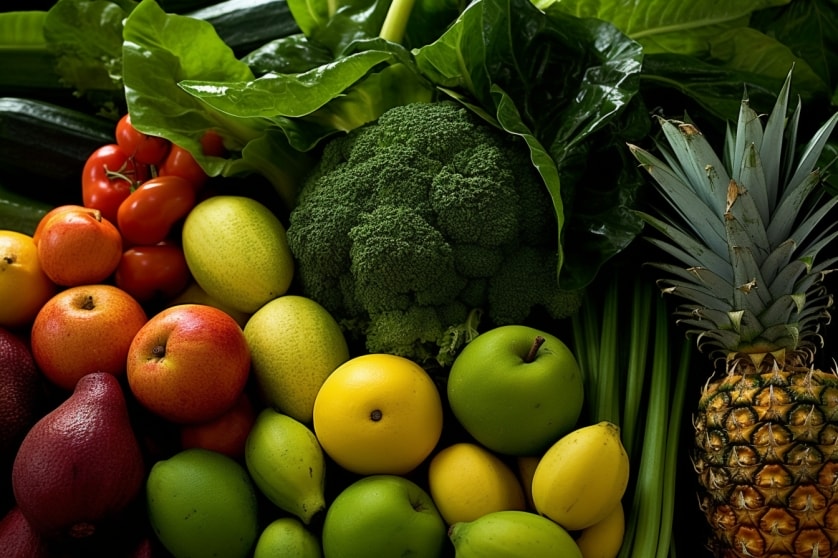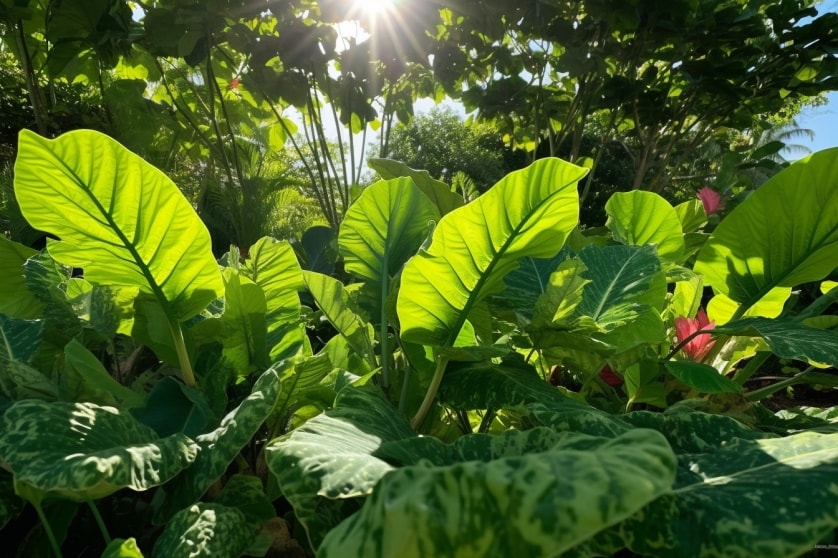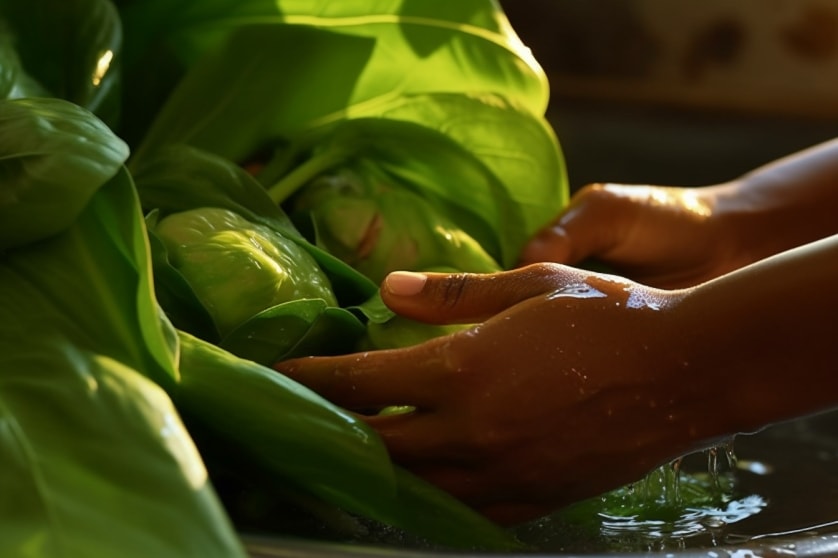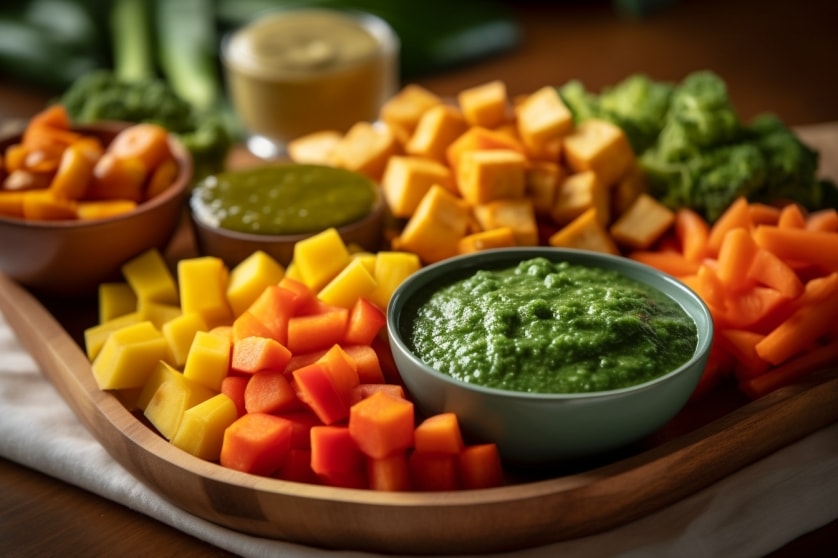Table of Contents
ToggleJamaican Callaloo for Babies: A Leafy Green Vegetable Dish
Introduction:
Ten years from now, what will your child remember about their first meals? Not the brand of high chair or the color of their bib, but the flavors that shaped their world. Today, we’re unlocking a secret that Caribbean parents have known for generations – the magic of callaloo, a leafy green that doesn’t just nourish bodies but creates memories.
Here’s what most parenting books won’t tell you: every spoonful of food you offer your baby is a vote for the kind of eater they’ll become. And callaloo? It’s like casting a vote for adventure, health, and cultural richness all at once.
Imagine the warm Caribbean sun kissing emerald leaves, the sound of steel drums in the distance, and kitchens filled with the aroma of something special simmering on the stove. This isn’t just food – it’s heritage served one tiny spoonful at a time.
But here’s the thing that might surprise you: callaloo contains more iron per serving than spinach and packs enough vitamin A to make carrots jealous. Yet somehow, this nutritional powerhouse remains one of the best-kept secrets outside the Caribbean.
The truth is, we often get stuck in the sweet potato-carrot-pea rotation, thinking we’re doing our best. But what if there’s more? What if we could offer our babies a world of flavors while checking every nutritional box?
Today, you’re not just learning about a vegetable. You’re discovering how to transform mealtime from a daily task into a daily adventure. Because here’s what I’ve learned: the foods we introduce in these early months don’t just feed our babies – they shape their relationship with food for life.

Section 1: Jamaican Cuisine and Callaloo
Every culture has that one ingredient that makes locals’ eyes light up with recognition. In Jamaica, whisper the word “callaloo” and watch faces transform with memories of Sunday dinners and family gatherings.
The journey of callaloo reads like an epic adventure novel. Born in West Africa, it survived the treacherous Atlantic crossing, found new life in Caribbean soil, and became so essential to island cuisine that Jamaica simply wouldn’t be Jamaica without it.
But what exactly makes callaloo the superstar of Caribbean kitchens? It’s not just one thing – it’s everything. This isn’t your average leafy green that wilts at the first sign of heat. Callaloo stands up to cooking, holds its nutritional value, and actually gets better with a little love and seasoning.
The beauty of callaloo lies in its versatility. Unlike spinach that turns to mush if you look at it wrong, callaloo maintains its character whether you steam it, sauté it, or blend it into baby food. Those dark green leaves, with their slightly bitter edge, teach young palates that not everything needs to be sweet to be delicious.
And here’s where it gets interesting for us parents: callaloo contains compounds that actually become more bioavailable when cooked – meaning your baby’s body can absorb more of the good stuff compared to raw leafy greens.
What strikes me most about callaloo in Jamaican culture is how it bridges generations. Grandmothers teaching mothers, mothers teaching children – each generation passing down not just recipes but stories, techniques, and the understanding that food is love made visible.

Section 2: Callaloo: Interesting Facts
Ready for some mind-blowing callaloo facts that’ll make you the most interesting person at the next playdate? Buckle up, because this leafy green has stories to tell.
Fact #1: The Ultimate Traveler
Callaloo didn’t just take one route to the Caribbean. This adaptable plant hitched rides on ships, in pockets, and through trade routes, making it to over 15 different countries. Each place it landed, it adapted, creating regional varieties that locals swear by.
Fact #2: The Identity Crisis That Isn’t
Here’s where things get interesting: “callaloo” can mean the plant, the dish, or even a way of life in some Caribbean communities. In Jamaica, you’ll find the amaranth variety, while Trinidad rocks the dasheen version. It’s like the Swiss Army knife of vegetables – same name, multiple functions.
Fact #3: The Medicine Cabinet in Leaf Form
Before modern pharmacies, Caribbean healers turned to callaloo for everything from soothing upset tummies to reducing inflammation. While we’re not suggesting you skip the pediatrician, it’s fascinating that science is now confirming what island wisdom has known for centuries.
Fact #4: The National Treasure
Trinidad and Tobago loved callaloo so much, they made it their national dish. Imagine loving a vegetable so much you put it on the country’s culinary flag! That’s like the United States making kale the national vegetable (spoiler: they haven’t).
Fact #5: The Zero-Waste Wonder
In an age where we’re all trying to reduce food waste, callaloo was ahead of the curve. Every part gets used – leaves in the pot, stems in soup, even the seeds saved for next season. It’s sustainability that doesn’t need a hashtag.
Fact #6: The Nutrient Overachiever
While other vegetables are content with one or two nutritional claims to fame, callaloo shows up with a full arsenal: protein, fiber, calcium, iron, vitamins A, B, and C, plus folate. It’s basically the valedictorian of the vegetable world.

Section 3: Preparing Callaloo for Babies
The moment has arrived – time to transform this Caribbean superhero into baby-friendly magic. But first, let me share a secret: preparing callaloo for your baby isn’t about following rules; it’s about creating possibilities.
• Look for leaves that practically glow with deep green color
• Give them a gentle squeeze – they should feel crisp, not limp
• Trust your nose – fresh callaloo smells earthy and clean, never sour
• Pro move: Buy from Caribbean markets where turnover is high
The Age-Appropriate Approach:
For the 6-8 month crowd: Think silk, not chunks. Steam those leaves until they surrender completely, then blend with the determination of someone who knows this puree could change everything. Add breast milk or formula until it flows like a gentle river.
For the 9-11 month adventurers: Time to add texture to the story. Leave little lumps that say, “Hey, I’m food, not just fuel.” This is where babies learn that eating involves more than just swallowing.
For the 12+ month graduates: Welcome to the big leagues! Chop, don’t puree. Let those little fingers explore. Watch as they discover that food can be picked up, examined, and yes, occasionally worn as a hat.
The Secret Sauce (Literally):
Here’s what changes everything: cooking callaloo with intention. Don’t just boil it into submission. If you’re sautéing for older babies, let that olive oil work its magic. Add a whisper of garlic (yes, babies can handle it after 8 months), and watch the kitchen fill with an aroma that says, “Something special is happening here.”
The Texture Timeline:
- Month 6: Smooth as meditation music
- Month 8: Thick like pudding with personality
- Month 10: Lumpy like life – interesting and varied
- Month 12+: Chopped like confetti for a flavor party
Section 4: Benefits of Callaloo for Babies
Let’s cut through the noise of “superfood” claims and talk real benefits – the kind that actually matter when you’re running on three hours of sleep and your baby’s nutrition is keeping you up at night (ironic, right?).
Benefit #1: The Vision Protector
That vitamin A in callaloo? It’s not just a number on a nutrition label. It’s your baby developing the ability to see your smile clearly across the room. It’s night vision developing properly. It’s eyes that sparkle with health.
Benefit #2: The Immune System’s Best Friend
Every parent’s nightmare: the daycare plague. But here’s the good news – callaloo’s vitamin C content rivals oranges, and unlike citrus, it won’t cause diaper rash. It’s immunity building that doesn’t come with a side of tears.
Benefit #3: The Bone Builder
Calcium isn’t just in dairy, friends. Callaloo brings calcium to the table without the lactose, perfect for babies with sensitive tummies or dairy-free families. Those tiny bones growing at lightning speed? Callaloo’s got their back (literally).
Benefit #4: The Gut Guardian
Let’s talk about poop (because what’s a parenting article without it?). The fiber in callaloo keeps things moving smoothly. No more prune juice negotiations or bicycle legs at 3 AM. Just happy digestive systems doing their thing.
Benefit #5: The Palate Educator
Here’s the long game benefit nobody talks about: babies who eat callaloo develop more adventurous palates. That slight bitterness? It’s training wheels for a lifetime of diverse eating. Today callaloo, tomorrow they’re the kid actually eating salad at birthday parties.
Benefit #6: The Cultural Connector
Food is identity. When you feed your baby callaloo, you’re not just providing nutrients. You’re saying, “You belong to something bigger. You’re part of a story that started long before you and will continue long after.”

Section 5: Authentic Jamaican Callaloo Baby Food Recipe
This gentle introduction to Jamaican flavors is appropriate for babies 6+ months old, with variations for different developmental stages. Callaloo, a nutrient-rich leafy green popular in Jamaican cuisine, provides iron, calcium, and vitamins A and C to support your baby’s growth.
Age Recommendations
- 6-8 months: Smooth puree
- 9-11 months: Thicker texture with soft lumps
- 12+ months: Minced or chopped consistency
Ingredients
- 1 bunch fresh callaloo leaves (or substitute spinach if unavailable)
- 1 small sweet potato, peeled and diced (traditional pairing in Jamaican cuisine)
- ½ ripe plantain, peeled and diced (optional, for babies 8+ months)
- ¼ cup coconut milk (unsweetened, for babies 8+ months)
- Water for steaming/boiling
For Older Babies (10+ months)
- Pinch of fresh thyme leaves (very small amount)
- ¼ teaspoon finely grated onion (optional)
Instructions
- Prepare the callaloo: Wash thoroughly and remove tough stems. For young babies, remove central ribs from leaves for smoother texture.
- Cook the vegetables:
- Steam sweet potato pieces until very tender, about 10-15 minutes.
- Add callaloo leaves during the last 3-4 minutes of cooking until wilted and soft.
- If using plantain, steam alongside the sweet potato until very soft.
- Blend appropriately for age:
- For 6-8 months: Transfer cooled vegetables to a blender or food processor. Add water or breast milk/formula to achieve a smooth, thin consistency.
- For 8+ months: Add a small amount of coconut milk while blending for a creamier texture and authentic flavor.
- For 9+ months: Leave slightly more texture in the puree.
- For 12+ months: Mash roughly instead of pureeing completely.
- For older babies (10+ months): If introducing mild seasonings, add a tiny pinch of fresh thyme leaves or trace amount of grated onion while blending.
- Serving suggestions:
- Serve warm or at room temperature.
- For babies 9+ months, serve alongside soft finger foods like small pieces of ripe mango or avocado.
Storage
- Refrigerate in an airtight container for up to 2 days.
- Freeze in baby food trays for up to 1 month.
Cultural Notes
In Jamaica, callaloo is often served with other foods like breadfruit or festival (a sweet fried dough). As your child grows, you can introduce these authentic pairings in age-appropriate ways.
Nutrition Benefits
- Callaloo: Rich in iron, calcium, vitamin A, vitamin C, and folate
- Sweet potato: Good source of beta-carotene, vitamin C, and fiber
- Plantain: Provides potassium, vitamin B6, and energy
- Coconut milk: Adds healthy fats important for brain development (in small amounts)
Conclusion
So here we are, at the end of our callaloo journey – except it’s not really the end, is it? It’s just the beginning of your baby’s adventure with this incredible leafy green.
Let me leave you with this: every parent who’s ever introduced callaloo to their baby remembers the moment. Not because it’s dramatic (though sometimes the facial expressions are Oscar-worthy), but because it represents something bigger.
It’s the moment you chose adventure over safety. Heritage over convenience. Nutrition with a story over nutrition from a jar.
Remember:
- The first try might not be magical (rarely is)
- The fifth try might surprise you
- The tenth try might become their favorite
- The hundredth serving might be at their wedding, when they ask for grandma’s callaloo recipe
You’re not just feeding a baby. You’re raising a human who understands that food is culture, medicine, adventure, and love all mixed into one beautiful, messy, wonderful experience.
And if they wear more callaloo than they eat the first few times? That’s not failure. That’s just part of the story you’ll tell at their graduation dinner, when they’re ordering the most adventurous thing on the menu because you taught them early that food is meant to be explored, not feared.
So go ahead. Buy that bunch of callaloo. Steam those leaves. Blend that puree. And know that with every
- The Great Nursing Strike: Causes and Solutions - October 7, 2025
- DIY Baby Food: Equipment-Free Approaches - October 1, 2025
- Iron-Rich First Foods: Preventing Common Deficiencies - September 30, 2025



